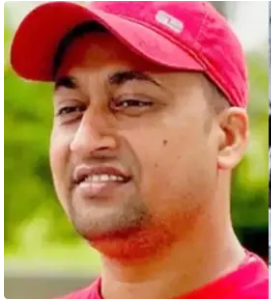The Mishra Homicide: A Bold Challenge to Law Enforcement
The murder of Chandan Mishra, a known criminal on medical parole, inside Paras Hospital’s ICU was a meticulously planned operation. Five assailants, led by Tausif Badshah, stormed the second-floor room number 209 between 7:00 and 7:30 AM, firing multiple rounds at Mishra before escaping effortlessly. The CCTV footage captured Tausif’s unmasked face, displaying no fear or hesitation, suggesting a meticulously orchestrated crime backed by a network of enablers. This incident, occurring in the heart of Patna, exposes the audacity of criminals who operate with impunity, challenging the state’s administrative and security apparatus.
The fact that such a high-profile crime could be executed in a reputed hospital raises serious questions about security lapses. How could armed assailants breach a facility’s security, commit murder, and escape without immediate intervention? The absence of effective security measures at Paras Hospital and the failure of the police to prevent or respond swiftly to the incident point to systemic deficiencies in Bihar’s law enforcement framework.
Tausif Badshah: The New Face of Criminal Glorification
Tausif Badshah, hailing from Sheikhpura district, has emerged as a notorious figure in Bihar’s criminal underworld. With a rap sheet including murder, extortion, and violations of the Arms Act, his gang operates across West and Central Bihar, including districts like Patna, Nalanda, Jehanabad, and Nawada. Tausif’s criminal empire thrives on land grabbing, contract disputes, and contract killings, bolstered by a growing social media presence that glorifies his actions. On platforms like Facebook and WhatsApp, his supporters hail him as a “Badshah” or “real hero,” echoing the glorification of 1990s gangsters like Sriprakash Shukla in Uttar Pradesh.
This romanticization of criminals is not new to Bihar. In the 1990s, figures like Mohammad Shahabuddin were celebrated as “bahubalis” (strongmen), their criminal exploits glamorized through media like Tapman magazine and TV shows like India’s Most Wanted. Today, Tausif’s unmasked execution of Mishra, captured on video and widely circulated online, mirrors this dangerous trend. Social media amplifies this glorification, with posters, stories, and videos portraying gangsters as masculine icons, diverting attention from their brutality to their perceived charisma. This phenomenon risks inspiring impressionable youth to emulate such figures, further eroding societal values.
The Role of Social Media in Glorifying Crime
The rapid spread of Tausif Badshah’s image and videos on social media platforms highlights a disturbing trend: the glamorization of gang culture. Much like the web series Rangbaaz sensationalized Sriprakash Shukla, Tausif’s exploits are being packaged as “gangster content,” attracting followers who admire his bravado. This digital glorification creates a vicious cycle, emboldening criminals and desensitizing society to violence. The youth, particularly in Bihar’s socio-economically challenged regions, are increasingly drawn to the allure of quick money and power, as evidenced by the growing number of young individuals joining criminal gangs.
The state’s failure to curb this trend is alarming. While the Information Technology Act provides mechanisms to regulate harmful online content, its enforcement in Bihar remains ineffective, as noted by Chief Minister Nitish Kumar in a 2019 letter to the Prime Minister. The lack of action against platforms hosting such content allows criminals to build their “brand” unchecked, further undermining law enforcement efforts.
Critique of the Nitish Kumar Government and Bihar Police
The Mishra homicide is not an isolated incident but part of a broader surge in crime that has tarnished Nitish Kumar’s “Sushasan Babu” (good governance) image. In July 2025 alone, over 50 murders were reported in Patna, including high-profile cases like businessman Gopal Khemka and BJP leader Surendra Kewat. These incidents, coupled with daily reports of shootings and robberies, have reignited accusations of “Jungle Raj.”

Government’s Inaction
Nitish Kumar, who also holds the Home portfolio, has been criticized for his apparent detachment from the escalating crime crisis. Despite holding review meetings and claiming that criminals will not be spared, his administration has failed to deliver tangible results. Political allies like Chirag Paswan and opposition leaders like Tejashwi Yadav have publicly lambasted the government’s inability to control crime. Paswan, a Union Minister and NDA ally, described Bihar’s law and order as a “serious concern,” noting that criminals now openly challenge the administration.
The government’s tendency to deflect blame onto the opposition, particularly the RJD, is a weak defense. Union Minister Jitan Ram Manjhi’s claim that the RJD orchestrates crimes to tarnish the NDA’s image is unsubstantiated and sidesteps the government’s responsibility to maintain law and order. Such rhetoric only deepens public distrust.
If Nitish Kumar is indeed unwell or unable to govern effectively, as speculated, he must consider stepping aside. Appointing a capable successor like Deputy CM Samrat Chaudhary or JDU leader Sanjay Jha could restore confidence in the administration. Alternatively, recommending President’s Rule in Bihar, though drastic, might be necessary to address the spiraling lawlessness and rebuild public trust.
Police Inefficiency
The Bihar Police’s failure to apprehend Tausif Badshah and his accomplices post-homicide reflects deeper systemic issues. The Additional Director General of Police, Kundan Krishnan, attributed the crime surge to seasonal factors and personal disputes, a claim that Tejashwi Yadav dismissed as “illogical” and demoralizing for the police force. Such statements undermine public confidence and highlight the police’s inability to tackle organized crime.
Allegations of political patronage protecting criminals like Tausif further erode trust in the police. The Mishra homicide’s execution suggests insider complicity, as the assailants navigated hospital security with ease. The police must investigate the “managers” facilitating such crimes, including potential links to administrative or political figures, to dismantle these networks.
Societal Impact and the Need for Reform
The glorification of criminals like Tausif Badshah has a corrosive effect on Bihar’s youth. The allure of gangster culture, amplified by social media, risks normalizing violence and drawing vulnerable young people into crime. This trend threatens the state’s social fabric and economic progress, as fear and insecurity deter investment and development.
To address this crisis, the government and police must adopt a multi-pronged approach:
1. Strengthen Law Enforcement: Increase police presence, improve training, and ensure swift action against criminals. Establishing specialized units to combat organized crime and cyber-enabled glorification is critical.
2. Regulate Social Media: Enforce stricter regulations on platforms hosting criminal content, collaborating with central authorities to curb glorification under the IT Act.
3. Community Engagement: Launch awareness campaigns to counter the appeal of gangster culture, emphasizing education and employment opportunities for youth.
4. Transparent Governance: Address allegations of political patronage by ensuring impartial investigations and holding complicit officials accountable.
The Mishra homicide at Paras Hospital is a stark reminder of Bihar’s descent into lawlessness, where criminals like Tausif Badshah operate with impunity and are glorified as heroes. The Nitish Kumar government’s failure to curb this trend, coupled with the police’s inefficiencies, has fueled public disillusionment. If the Chief Minister is unable to address this crisis, he must consider stepping aside for a capable successor or recommending President’s Rule to restore order. Bihar cannot afford to revert to the “Jungle Raj” of the 1990s, where criminals were celebrated, and law was a mere suggestion. Decisive action is needed to dismantle criminal networks, regulate social media, and rebuild trust in governance, lest the state’s youth and future fall prey to the allure of glorified crime.





